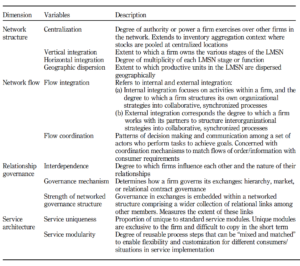The purpose of a new paper by researchers from the University of Cambridge is to investigate the interplay between configuration dimensions (network structure, network flow, relationship governance, and service architecture) of last-mile supply networks (LMSN) and the underlying mechanisms influencing omnichannel performance.
The existing literature in the operations management (OM) field was shown to provide a limited
understanding of LMSNs within the emerging omnichannel context. Case study results suggest that particular configurations have intrinsic capabilities and that these directly influence omnichannel performance.
Taxonomy of LMSNs
The study proposes a taxonomy of LMSNs comprising six forms, with two hybrids, supporting the
notion of equifinality in configuration theory. Propositions are developed to further explore interdependencies between configurational attributes, refining the relationship between LMSN types, and factors influencing omnichannel performance.
Practical implications
The findings provide omnichannel retailers with a set of design parameters for the (re)configuration of LMSNs and facilitate performance evaluation using the concept of fit between the configurational attributes. The developed model sheds light on the consequential effects when certain configurational attributes are altered, preempting managerial attention.
Given the global trend in urbanization, improved LMSN performance would have positive societal impacts in terms of service and resource efficiency.
Source:
Stanley Frederick W.T. Lim, Jagjit Singh Srai, (2018) “Examining the anatomy of last-mile distribution
in e-commerce omnichannel retailing: A supply network configuration approach”, International Journal
of Operations & Production Management, Vol. 38 Issue: 9, pp.1735-1764


